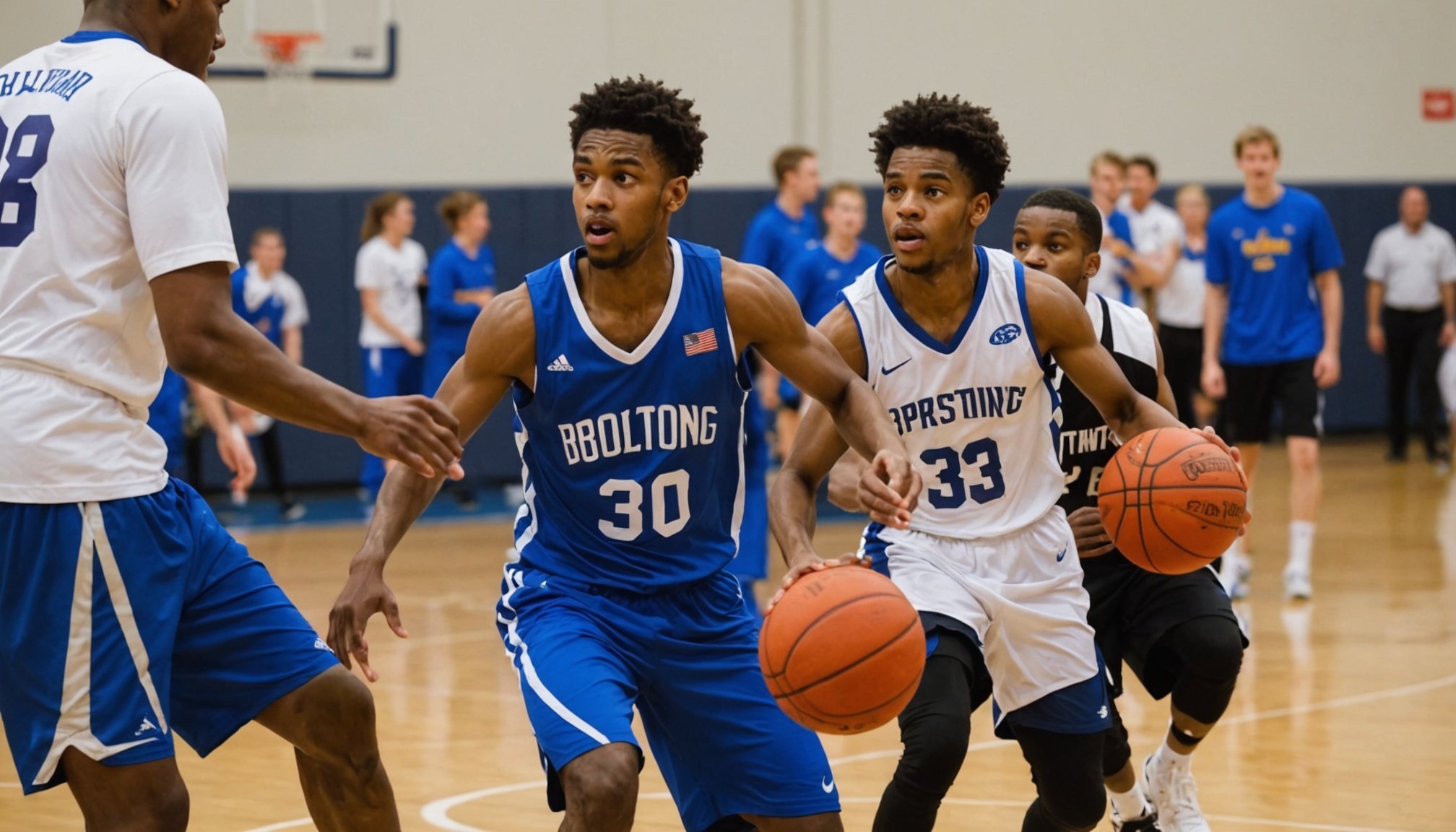The Impact of Basketball on UK Youth Sports Participation
Basketball plays a significant role in increasing sports participation among young people in the UK. Its fast pace and team-based nature make it an appealing choice, encouraging youth basketball UK programs to grow rapidly in schools and communities. The accessibility of basketball courts and minimal equipment requirements further boost its popularity.
One of the central benefits of basketball is fostering youth development through sports. Physically, young players improve coordination, endurance, and agility. Mentally, basketball enhances focus, discipline, and resilience. Socially, it promotes teamwork, communication, and confidence, essential qualities that extend beyond the court.
Also read : Discover the physical and mental health benefits of basketball for uk athletes
Statistics reveal promising trends: youth basketball UK participation has surged, with many programs reporting year-on-year growth. This growth reflects basketball’s power to attract diverse groups, including those who might be less inclined to engage in traditional sports. As a result, basketball significantly impacts the overall increase in youth sports participation across the UK.
With its blend of physical challenge and inclusive community spirit, basketball offers a compelling pathway for young people seeking engaging and rewarding sports experiences. This momentum helps address broader public health goals while supporting holistic youth development through sports.
Additional reading : Unlocking success: strategies for uk teams to excel in basketball competition
Success Stories and Role Models in UK Youth Basketball
Inspiring young athletes through real-life examples
The landscape of UK youth basketball is shaped profoundly by basketball success stories UK, which serve as powerful motivators for young players. Recognising youth role models such as Luol Deng and recent stars emerging from grassroots clubs reinforces the dreams of aspiring athletes. These role models exemplify dedication, skill, and perseverance, proving that UK talent can thrive on national and international stages.
Community-driven youth basketball programs showcase success by nurturing talent and providing vital support networks. Clubs with strong youth development schemes have demonstrated substantial community impact, encouraging participation and fostering social cohesion. These programs create an environment where aspiring players witness clear pathways from local competitions to professional arenas.
In particular, inspiring young athletes benefit from seeing peers succeed through structured training and teamwork. Highlighting stories of perseverance, such as overcoming challenges or balancing education and sport, offers relatable role models. As a result, youth basketball in the UK gains momentum, not only shaping skilled players but also cultivating leaders within their communities.
Challenges to Engaging UK Youth in Basketball and Sports
Engaging youth in sports like basketball in the UK often faces significant barriers to participation. One major challenge is the limited availability of suitable facilities. Many areas lack affordable, nearby courts, discouraging consistent play. Combined with funding shortages, this restricts programs that could effectively support young players.
Social and cultural factors also play a role. In some communities, basketball may not be viewed as a mainstream sport, leading to lower awareness and interest. This is especially true where football dominates youth engagement, making it harder to attract diverse participants to basketball activities.
Moreover, inclusivity is essential but frequently overlooked. Youth sports challenges in the UK include making programs accessible for all abilities and backgrounds. Inclusive programming ensures that underrepresented groups feel welcome, fostering a supportive environment that encourages sustained involvement.
Addressing these youth sports challenges UK requires coordinated efforts from schools, local authorities, and sport organizations. Investing in public courts, promoting basketball’s benefits, and designing inclusive activities create pathways for greater engagement and help overcome these barriers to participation.
Actionable Strategies and Programs to Boost Basketball Participation
Engaging young players through grassroots basketball UK programs is crucial to sustaining interest and growing the sport nationally. Many basketball development initiatives collaborate with schools and community organisations to reach youth where they live and learn. These partnerships create accessible, fun environments where children can experience basketball firsthand.
Youth engagement programs often include after-school clubs, weekend leagues, and summer camps designed to inspire youth through sport. Such setups encourage skill development while promoting teamwork and discipline. Local councils also play a vital role by providing funding, facilities, and organisational support for these initiatives.
For coaches, parents, and educators looking to motivate young players, practical tips include setting achievable goals, recognising effort rather than just results, and keeping training sessions varied and enjoyable. Encouraging consistent participation through rewards and community events further builds enthusiasm. Emphasising enjoyment alongside improvement helps retain interest, which is key to long-term basketball growth within grassroots basketball UK.
By integrating basketball development initiatives that actively involve communities, the sport creates positive experiences that resonate with youth, fostering lifelong engagement.
UK Organisations, Resources, and Support Networks
Discover where young players can grow in basketball
The UK basketball organisations play a crucial role in fostering youth participation through structured programs and accessible resources. Key bodies such as Basketball England provide extensive support for young athletes, offering training frameworks, competitions, and educational materials designed specifically for youth development.
For families and educators seeking to engage young players, numerous support for young athletes schemes have been established. These include initiatives that connect schools with local clubs, ensuring that children have easy access to basketball opportunities. Community centers often partner with these organisations to provide inclusive environments encouraging skill-building and teamwork.
When finding and joining youth basketball opportunities, it is valuable to explore local clubs registered with national bodies. These clubs typically offer beginner sessions and pathways for progression suitable for varying ages and skill levels. Additionally, access to mentorship and coaching from qualified instructors supports athlete growth and motivation.
In summary, leveraging the resources provided by UK basketball organisations and support networks enables young athletes to thrive. Connecting with local clubs and youth sports resources creates a reliable foundation for any aspiring basketball player’s journey.
How Robot Hoovers Work
Understanding how robot hoovers work reveals why these devices have become household favorites. At their core, robot hoovers navigate your home using a combination of sensors and smart algorithms. These sensors detect obstacles, edges, and dirt, enabling the robotic vacuum to clean efficiently without supervision.
Most robot hoovers include optical or infrared sensors to map rooms. This helps the device plan optimal cleaning routes, avoiding furniture or stairs. Some advanced models integrate LiDAR technology, offering precise spatial awareness for better navigation. Additionally, the use of smart algorithms allows the device to adapt its behavior depending on room size or cleaning needs.
Robots are also equipped with various cleaning tools, such as rotating brushes and suction mechanisms. These components collect dust and debris, with some models even featuring wet mopping options. Battery life and charging stations ensure the robot operates until the task is complete, returning autonomously to recharge when needed.
For example, a robot hoover in a home with hardwood floors uses its sensors to avoid carpets, focusing suction on hard surfaces. This intelligent operation saves time and achieves thorough cleaning without manual intervention. Understanding these functions can help consumers select a robot hoover that aligns with their lifestyle and cleaning preferences.






